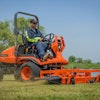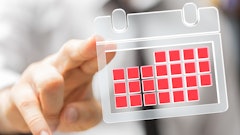By recalculating depreciation, many contractors have been able to show reduced costs, enhanced asset valuations and enhanced equity.
It is about this time of the year when many contractors get that ugly call from their outside CPA who says, “Oh by the way, I have figured up your annual depreciation entry for the year; it is $22,500.”
Suddenly that $60,000 profit for the year becomes $35,000. The Equity account shrinks by $22,500 and the Debt-To-Equity Ratio skyrockets over the 2:1 ratio that a bank lender wants the borrower to maintain to renew a line of credit. What do you do now?!
Here are some ideas to help you cope with (or avoid) this situation.
What Exactly is Depreciation?
Depreciation is an accounting concept. It is the amount you include in your financial statements every month to account for what your equipment is costing you in your total cost structure. If you base your pricing on absorbed overhead costs (and you should) this becomes a very important number. As you will read below, there are several ways to determine depreciation, but no matter what the final number is, the fact that it occupies an important place in your business management strategy should never be a surprise.
Affect on Financial Statements
Depreciation shows up in two places: 1) a line item in the “overhead” section of your Profit and Loss Statement, 2) in the fixed assets section of your Balance Sheet as a negative entry.
In the P&L, depreciation adds to your costs by recognizing what your equipment costs you. In the Balance Sheet, depreciation reduces the value of your equipment and buildings to recognize that they are worth less as each month goes by.
How is it Calculated?
There are two basic methods used for determining the depreciation you include in your monthly financial statements: Straight Line Depreciation (SL) and Double Declining Balance Depreciation (DDB).
In determining SL Depreciation, you take the original total cost of the equipment in your yard, deduct the amount you think it will be worth when you have used it up (which may be zero), and then divide this number by the number of months you think it should last. That gives you the monthly number to include in your financial statements each month.
In determining DDB, you start out with the same process. However, when you get to that first year’s SL number, you double it and claim that number as depreciation for the next year (divided by 12 for your monthlies). The next year you take the un-depreciated balance and divide it by the number of remaining years of life. Now double that number for the depreciation you will claim in year two. Repeat this process until it’s all gone.
Which Method is Best?
SL Depreciation evens out your cost of equipment over its lifetime, is usually the lowest depreciation cost in the first years of using the equipment, and, if you are trying to maximize your profit (or minimize your loss), it is the best method to use.
DDB Depreciation accelerates the cost recognition in the early years and is probably a more realistic reflection of what your equipment is really costing. The resulting un-depreciated balances at the end of each year will probably be a more realistic reflection of how much the equipment is still worth for asset or sale value if you liquidate. Some accountants will modify the doubling of the SL number and take 150% if they want to modify the calculation and slow things down a bit.
Is This What My CPA Does?
The answer to this question is maybe yes, maybe no. Your CPA will typically focus on the depreciation method that helps minimize your Federal Income Taxes in the short range unless you have had discussions with him or her to the contrary.
In the last few years the Internal Revenue Service (IRS) has allowed you to compute 100% depreciation for up to $250,000 in new equipment purchases each year on an “Accelerated” Basis under Section 179 of the tax code. The problem can be, however, that next year you have used up most of your depreciation basis and your profit skyrockets unless you buy a whole bunch more equipment.
This might be good thinking from a tax standpoint, but it might be the worst thinking from a management standpoint. Accelerated Section 179 Depreciation can cause your costs, profits and Equity accounts to yoyo up and down from year to year while SL or DDB evens this phenomenon out over the years and reflects a more realistic management information environment.
It is permissible to use two different Depreciation Schedules, one for your Tax Returns and one for your Managerial Financial Statements. Your CPA will prepare a reconciliation of your Taxable Profit to your Book profit each year and include it in your Tax Return.
How Does Depreciation Help Me?
Many companies that have been using Section 179 Accelerated Depreciation over the last few years for their Internal Financial Statements may find that they are over-costed and over-depreciated. This can reflect as low profits, high costs, and low asset and equity values. You should check your previous year Federal Income Tax Return and look for the Asset and Depreciation Schedule. If you don’t have a copy of it ask your CPA for it.
Check the Depreciation Schedule to see what depreciation methods have been used and to what extent Section 179 or other “Special Allowance” depreciation deductions have been taken. You may want to recalculate those allowances using SL or DDB methods and then see how the new Total Cumulative Depreciation compares to the Total Allowance For Depreciation shown on your Balance Sheet as of that tax year date. If the difference is significant, I would recommend you discuss it with your CPA making sure they understand the Managerial implications that exist.




















